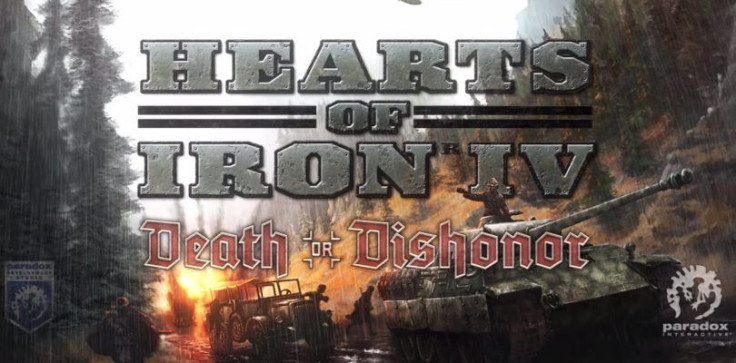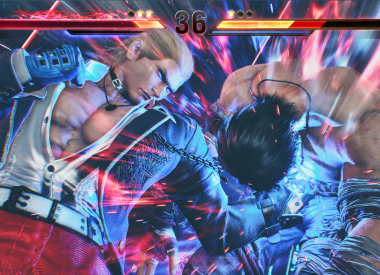The newest DLC for Hearts of Iron 4 focuses on the smaller countries caught between the might of the USSR and Germany. I broke down a few of the announced features in a previous article, but now I’ve had a chance to play around with it and I wanted to share a more in depth impressions on the update and the DLC.
First and foremost are the new political focus trees for Romania, Hungary, Yugoslavia, and Czechoslovakia. Focus Trees are how you guide your country’s politics in Hearts of Iron. In many ways, they determine the heart and soul of your country. Previously, these countries had generic focus trees, but now they have ones tailored to each country’s history and opportunities in the war years.
Romania
Romania was known for being incredibly opportunistic during the war. They started Allied with Poland and France, then they joined the Axis and invaded the Soviet Union, but when things didn’t go their way they switched sides again and joined the Soviet Union against the Germans. Their new focus tree reflects this. Instead of forcing you to choose your side relatively early, their focus tree revolves around cutting different deals with different countries while not binding yourself to any of them. This is pretty fun to play with and unusual in the game.
Romania’s other path focuses on forging them into the strongest power in the Balkans and bringing the surrounding countries under her thumb, but will mean you must break your old alliances.
You also will have to deal with hedonist King Carl II, who will cause political scandals left and right, through random events.
Hungary
Hungary comes with some very complex new political options. They start the game as a disarmed nation due to the crippling Treaty of Trianon. You can break the Treaty as a national focus, but your neighbors must approve you doing so.
From there, you have the option to try to peacefully Annex all the territory you lost in the 1920 treaty. Paradox indicates that there are some super complex event chains here that can lead to countless outcomes. So if you like the event chain aspect of the game, Hungary is the way to go.
Other options for Hungary are reforming the Communist state that briefly existed at the end of World War 1, or most excitingly, restoring a Habsburg to the throne! This is by far the coolest direction and potentially the hardest since NO ONE wanted them back in control.
Yugoslavia
Heading into the war, Yugoslavia had a weak military and many rival, antagonistic ethnic groups. Both the Axis and the Allies were eager to court Yugoslavia into their faction and were ready to go to war with it if it chose poorly.
Fittingly, Yugoslavia is a very difficult country to play. At the start of the game, in addition to a weak military, you will get National Spirits to go with the unrest of each Ethnic group. They will make policy changes more expensive, lower national unity, and decrease factory output.
You will also be fighting against time because if you take too long to choose between the Axis and Allies, they may declare war on you, but if you choose too soon you could face an internal revolution.
In my playthrough, I took another path and did all I could to depose the monarchy and embrace Communism. I invaded still unaligned Hungary but things took a turn when the Allies declared war on me. You’d think they would have bigger things to deal with… I defeated Greece, but finally fell when the Axis invaded in turn and the Soviet Union was unable to get help to me in time.
Czechoslovakia
Czechoslovakia may seem even more of a lost cause than Yugoslavia, but they do have some things going for them. To reflect its historically strong industry, the Czech get a buff to factory output.
Diplomatically, there are two main directions to go: Either stand up to Hitler or don’t. Each choice has a few splinter options. If you stand up to Hitler, you can put your trust in the Western Powers (which is what doomed them in the real war), you can create your own faction and try to pull in Yugoslavia and Romania, or you can become Communist and join the Comintern.
If you give in to Hitler, you also have a few options as well. You can try appeasement by handing over the Sudetenland, but again appeasement didn’t seem to work great with Hitler. Or you can become Fascist and try to become a full partner in the Axis or at least a German Satellite state.
You can also go the military route and try to build up heavy fortifications along the border but this of course will take time and resources.
All in all, I really feel a ton of thought, care and work went into the development of all these countries for this DLC. One of my biggest problems with the last DLC Together for Victory is that even though it updated all the Commonwealth countries, those countries are spread around the globe, and usually surrounded by countries that still have their generic focus trees. This meant you were generally dominating how events develop in your region. With Death or Dishonor , all the updated countries share borders with each other, this allows for a lot more fluid play as you are forced to pay attention to what direction your neighbors are heading in. I hope Paradox takes this regional approach with future DLC updates.
In the next article I’ll break down the non-country specific changes the DLC introduces.

















